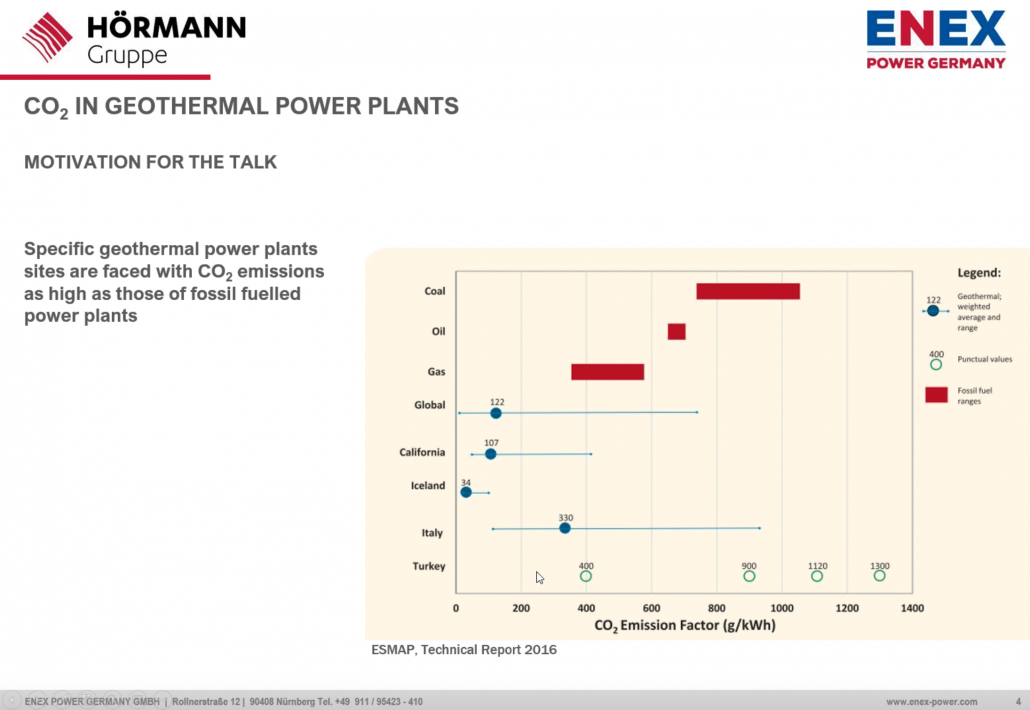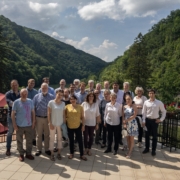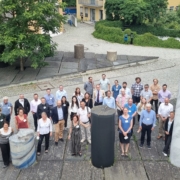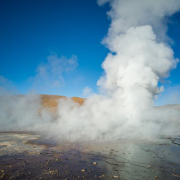Recap of the “Focus on Geothermal – Energy for the Weekend” Webinar
How can deep geothermal be green whilst releasing CO2 emissions into the atmosphere?
The figure below seems to indicate that deep geothermal energy is not as green as it could be assumed, in some instances reaching levels of emissions comparable to fossil fuels energy sources (gas, coal and oil). However, this graph is a simplification of what is really at stakes. First of all, geothermal emissions here are presented as life-long emission meaning resulting from exploration, drilling, building the plant, manufacturing of all the parts, operation and decommission. All but stages but operation are CO2 emissions that currently cannot be avoided because of the reliance on fossil-fuel for manufacturing any part and the value chain in general.

With regards to CO2 emissions during geothermal operation one might wonder why an energy source that does not burn fossil fuel nor carbon content still produces GHG emissions. And this is due to the CO2 content into the water reservoir from which heat is extracted. Think about a bottle of sparkling water when the lid is on, there is no bubble rising to the surface of the water and therefore no gas can expand, in short: CO2 is dissolute in the water, the system is sealed. Once you open the bottle, you witness this characteristic “pop” (due to expanding gases) followed by a rush of CO2 bubbles to the surface that then make their way to the atmosphere: the system is open.
Deep geothermal reservoirs, which are polluting, function in the very same manner as a bottle of sparkling water (albeit at much higher pressure). Drilling to a geothermal reservoir in order to harvest its heat means opening a closed system. The presence of CO2 in deep geothermal reservoirs is a naturally occurring phenomenon linked to Earth magmatic events and decay of any living organism.
Luckily, geothermal CO2 emissions during operation can be mitigated, as Hörmann Grupp presented, there are ways to make a geothermal operation 100% green. Their experiments were based on a pre-existing body of literature on carbon capture. During their tests, they further confirmed that it is possible to capture CO2 released from the brine and reinject it in the geothermal reservoir so that it never pollutes the atmosphere. Furthermore, thanks to the high pressure put on the CO2, it dissolves into the water thus not perturbing the heat exchange critical for any geothermal plant.
Experiments and new technologies are improving geothermal each day making the energy greener and more reliable than ever. It is really a breakthrough that will untroubledly help trigger a massive growth of geothermal in the energy market worldwide.


 Tamas Miklovicz
Tamas Miklovicz


 EFG
EFG

